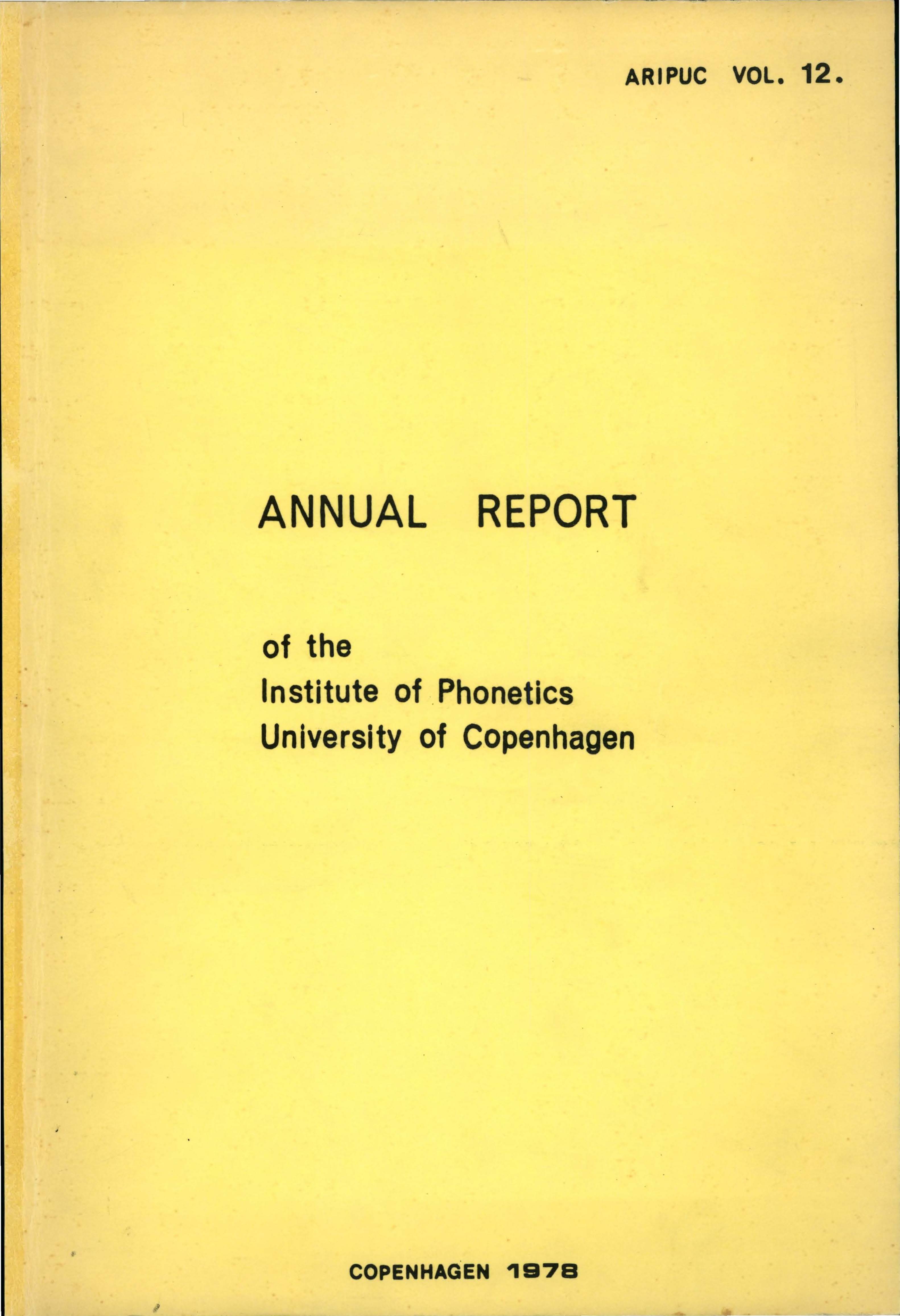Form factors for power spectra of vowel nuclei
DOI:
https://doi.org/10.7146/aripuc.v12i.131684Abstract
The spectrum of the vowel nucleus is, within the present framework, regarded in terms of 'Form Factor Elements'. One such element is reflected in the structure of formant clusters and may be expressed in terms of bandwidth. It is shown that in two-formant synthesis a vowel can change its identity from /i/ to /e/ (or /y/ to/ø/ with a decreased pole span) simply by an increase of the higher pole bandwidth. Prior to this discovery, and indicating its potential, a fourformant synthesis experiment was conducted. In this part of the investigation the possibility of constructing /e/ vowel spectrum envelopes containing either higher, equal or lower spectral centres of gravity, as compared to envelopes generating the auditory impression of /i/, is demonstrated. N.B. in the process of generating the power spectra for /i/ and /e/, the frequency parameters F4 , F1 and F0 were held constant. The spectrum balance was achieved either by means of only frequency adjustments of F2 and F3 or, with these frequencies "frozen", by amplitude modifications of F2, F3 and F4. The two experiments emanate from an empirically found paradoxical relationship for one female voice between such parameters as Tongue Height plus Fronting versus Second Formant Prime, (F'2) versus Centre of Gravity for the Spectral Components above F1 , (denoted here as G'2). The psychoacoustic evidence obtained focuses the attention towards the development of an "excitation area" theory of perception based on form factors.
Downloads
Published
How to Cite
Issue
Section
License
Copyright holder author

